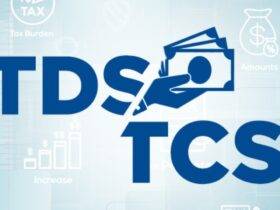Autism Spectrum Disorder (ASD) is a complex neurodevelopmental condition that affects individuals in unique ways. While there is no one-size-fits-all approach to autism treatment, recent research has shed light on a promising avenue: Blood Flow Restriction Therapy (BFRT). This innovative technique, initially used for athletic performance and rehabilitation, is showing significant potential in enhancing physical and cognitive function in autistic individuals.
Here is a small guide on the science behind BFRT and its application in the context of autism treatment.
Understanding Blood Flow Restriction Therapy
Blood Flow Restriction Therapy involves the use of specialized cuffs or bands placed on the limbs (typically the arms or legs) to partially restrict blood flow during exercise. This restriction monitored by professionals at blood flow restriction lincoln ne creates a unique physiological response that can lead to various benefits, both physical and cognitive.
In the context of autism treatment, the application of BFRT is carefully tailored to meet the specific needs and abilities of each individual.
The Physical Benefits
1. Muscle Strength And Endurance
Autistic individuals often face challenges with motor skills. BFRT, when combined with resistance training, has been shown to enhance muscle strength and endurance. This can help improve motor coordination and physical abilities.
2. Cardiovascular Health
BFRT can stimulate cardiovascular adaptations, such as improved blood vessel function and endurance. This is particularly important as many autistic individuals may face cardiovascular health issues.
3. Reduced Muscle Atrophy
Individuals with autism might be at risk of muscle atrophy due to limited physical activity. BFRT can help counteract this by promoting muscle growth and maintenance.
The Cognitive Benefits
1. Improved Attention And Focus
Regular BFRT sessions have demonstrated the potential to enhance attention and focus. This treatment when combined with customized autism treatment encino ca can be especially valuable for individuals with ASD who struggle with attention-related challenges.
2. Enhanced Cognitive Function
BFRT’s impact on blood flow and oxygen delivery to the brain can enhance cognitive function. It may lead to improved memory, problem-solving skills, and overall cognitive abilities.
3. Stress Reduction
Many individuals with autism experience heightened stress and anxiety levels. Blood Flow Restriction Therapy has shown promise in reducing stress and promoting relaxation, potentially aiding in emotional regulation. Therefore, it can be quite helpful to keep autistic individuals calm.
Tailoring BFRT To Autism Treatment
It is essential to emphasize that BFRT for autistic individuals should be carried out under the guidance of qualified healthcare professionals and therapists who have experience working with this population. The therapy should be customized to address each individual’s unique needs, preferences, and sensory sensitivities.
Bottom Line
Blood Flow Restriction Therapy represents a groundbreaking approach to enhancing physical and cognitive function in individuals with autism. While the research is still evolving, the promising outcomes suggest that BFRT can be a valuable addition to a comprehensive autism treatment plan. By unlocking the potential of this innovative therapy, we can empower autistic individuals to thrive and lead fulfilling lives, overcoming physical and cognitive challenges along the way.






























Leave a Reply